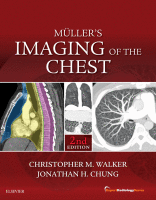Physical Address
304 North Cardinal St.
Dorchester Center, MA 02124

Bronchiolitis refers to a wide variety of inflammatory and fibrotic disease processes affecting the small airways. Bronchiolitis is common and may be the primary manifestation in various clinical settings (e.g., infections, connective tissue diseases (CTDs), inhalational injuries, cigarette smoking, drug…

Asthma is an inflammatory disease characterized by increased airway reactivity and by airflow obstruction that is at least partially reversible and results in recurrent episodes of wheezing, breathlessness, and cough. Etiology Asthma can be divided into two main categories: extrinsic…

Bronchiectasis Etiology Diseases of the airways are surprisingly common in clinical practice, and imaging tests have a central role in the evaluation of the patient. Bronchiectasis is an important yet, in historic terms, a surprisingly neglected disorder characterized pathologically by…

The wide variety of tracheal diseases includes both benign and malignant conditions that may manifest as tracheal masses, focal or diffuse tracheal thickening, or tracheal calcification. Tracheal tumors, inflammatory conditions involving the trachea, infections, and posttraumatic or iatrogenic injuries are…

Etiology Pulmonary edema is defined as an excess of fluid in the extravascular compartment of the lung and is classified into four categories based on pathophysiology: hydrostatic edema, permeability edema with diffuse alveolar damage, permeability edema without diffuse alveolar damage,…

Etiology Pulmonary edema is defined as an abnormal accumulation of fluid in the extravascular compartments (interstitial and airspace) of the lung. Traditionally, pulmonary edema has been divided into hydrostatic edema and permeability edema based on the presumed mechanism. Hydrostatic edema…

Pulmonary arterial hypertension (PAH) is defined as a mean pulmonary arterial pressure of greater than 25 mm Hg at rest or 30 mm Hg with exercise, with an elevated pulmonary vascular resistance (PVR) greater than 3 Wood units. Although pulmonary pressures may…

Fat Embolism Etiology, Prevalence, and Epidemiology The term fat embolism refers to the presence of globules of free fat within the pulmonary vasculature. Fat embolism is common among trauma patients, especially those with long bone or pelvic fractures. In the…

Etiology Chronic pulmonary thromboembolism is an uncommon entity resulting from an incomplete resolution of thrombi, leading to complex restructuring processes within pulmonary arteries. Extensive clinical experience from the literature suggests that failure of thromboembolic resolution after a single embolic event…

Etiology Pulmonary embolism (PE) refers to blood clot(s) within the pulmonary arterial system, usually caused by migration of deep vein thrombosis (DVT) from the lower extremities. Rarely, emboli are from other sources, such as the iliac veins, renal veins, inferior…